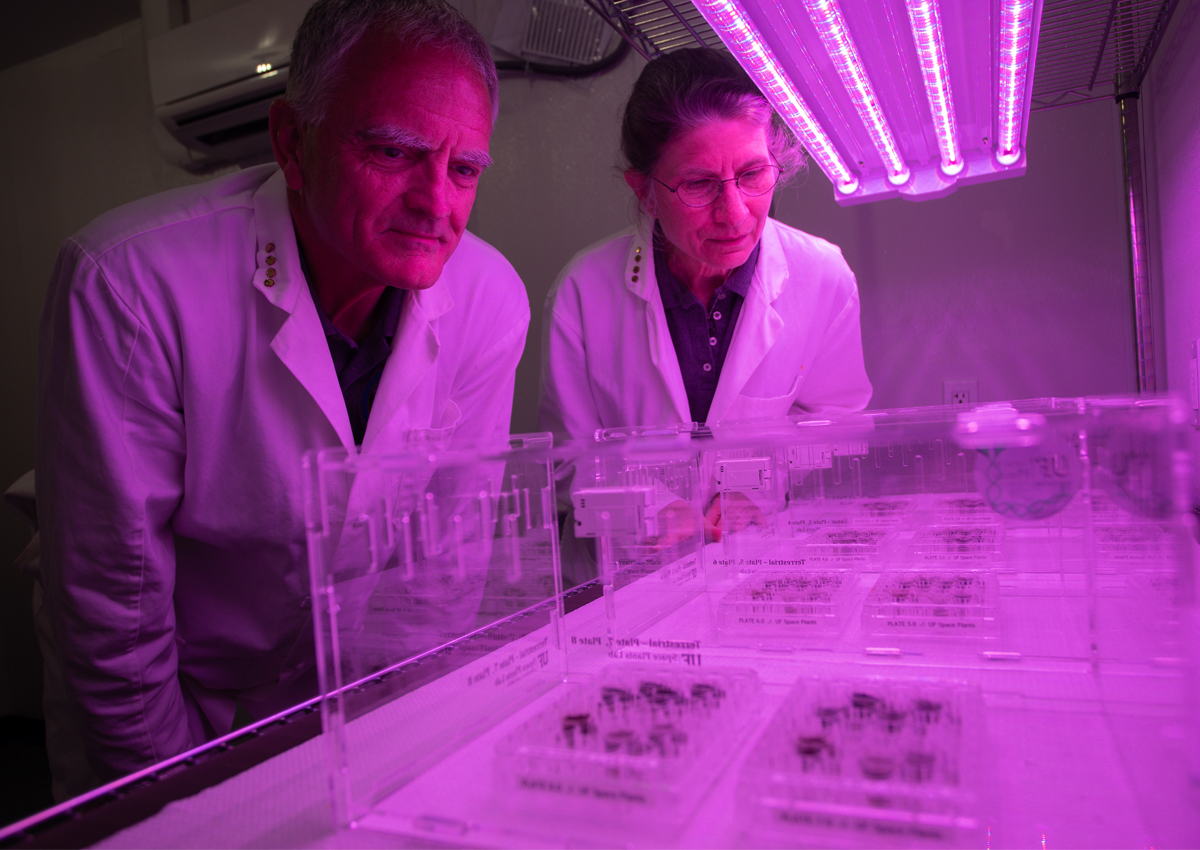
Scientists Grow Plants in Soil from the Moon for the First Time
May 18, 2022| |
For the first time in human history, scientists marked a milestone in lunar and space exploration as they have successfully grown plants in soil from the moon collected during the Apollo 11, 12, and 17 missions.
Scientists Rob Ferl and Anna-Lisa Paul from the University of Florida showed that plants have successfully sprouted and grew in lunar soil. Their study also investigated how plants respond biologically to the moon's soil, or lunar regolith, which is radically different from soil found on Earth. This work is the first step toward growing plants for food and oxygen on the moon or during space missions. The research also comes as the Artemis Program plans to return humans to the moon.
Ferl and Paul designed a deceptively simple experiment: plant seeds in lunar soil, add water, nutrients, and light, and record the results. It was complicated because the scientists only had 12 grams — just a few teaspoons — of lunar soil to do the experiment. On loan from NASA, the scientists applied three times in the last 11 years for a chance to work with the lunar regolith. To grow their tiny lunar garden, the research team used thimble-sized wells in plastic plates normally used to culture cells. Each pot had approximately a gram of lunar soil that was moistened with a nutrient solution and planted with a few Arabidopsis seeds. Before the experiment, the researchers were not sure if the seeds planted in the lunar soils would sprout, but nearly all of them did.
The researchers observed differences between the plants grown in lunar soil and the control group. Some of the plants grown in the lunar soils were smaller, grew more slowly, or were more varied in size than their counterparts. The plants' response to lunar soil may be linked to where the soil was collected, according to the scientists who worked on the research. They found that the plants with the most signs of stress were those grown in what lunar geologists call mature lunar soil. These mature soils were exposed to more cosmic wind, which alters their makeup. On the other hand, plants grown in comparatively less mature soils fared better.
For more details, read the articles in the University of Florida News and NASA.
| |
You might also like:
- Study Shows CRISPR Works Well in Outer Space
- GE Cotton Goes to the International Space Station
- Bacterial Strains Isolated in International Space Station Could Help Grow Plants in Mars
Biotech Updates is a weekly newsletter of ISAAA, a not-for-profit organization. It is distributed for free to over 22,000 subscribers worldwide to inform them about the key developments in biosciences, especially in biotechnology. Your support will help us in our mission to feed the world with knowledge. You can help by donating as little as $10.
-
See more articles:
-
News from Around the World
- Gene Drive Organisms: There is No One Size Fits All
- Gene Discovery Set to Improve Wheat Yields and Increase Protein Content by Up to 25%
- New Gene That Can Increase Yield in Wheat Identified by US Scientists
- Scientists Grow Plants in Soil from the Moon for the First Time
- China to Approve More GM Maize Varieties - Agri Ministry
-
Research Highlights
- Structure of Plant Immunity Protein Revealed 25 Years After Discovery
- API5 Enhances Virus Resistance in Potatoes
- Experts Boost Anthocyanin Content of Radish Sprouts
-
Read the latest: - Biotech Updates (November 12, 2025)
- Gene Editing Supplement (October 29, 2025)
- Gene Drive Supplement (February 22, 2023)
-
Subscribe to BU: - Share
- Tweet

